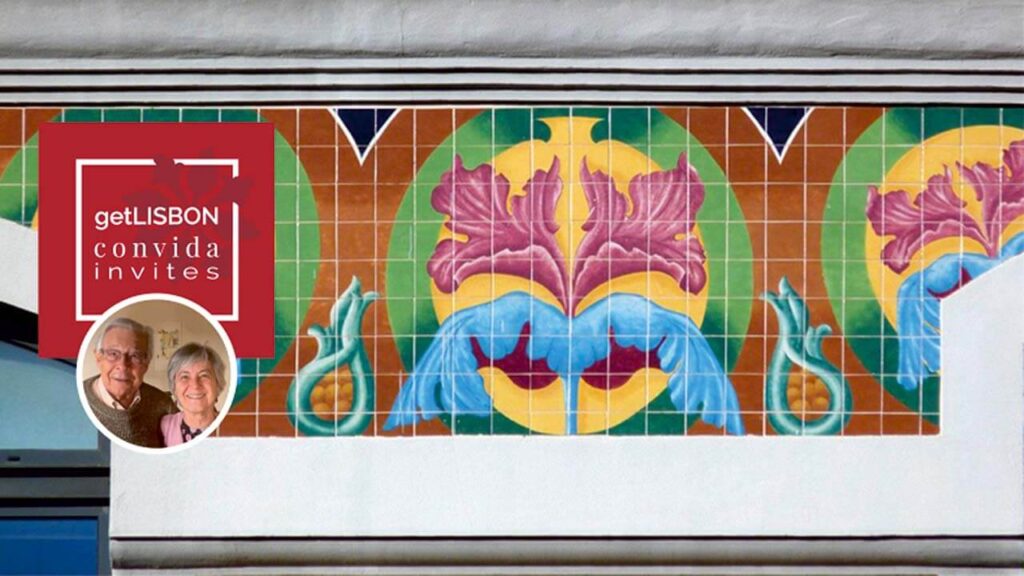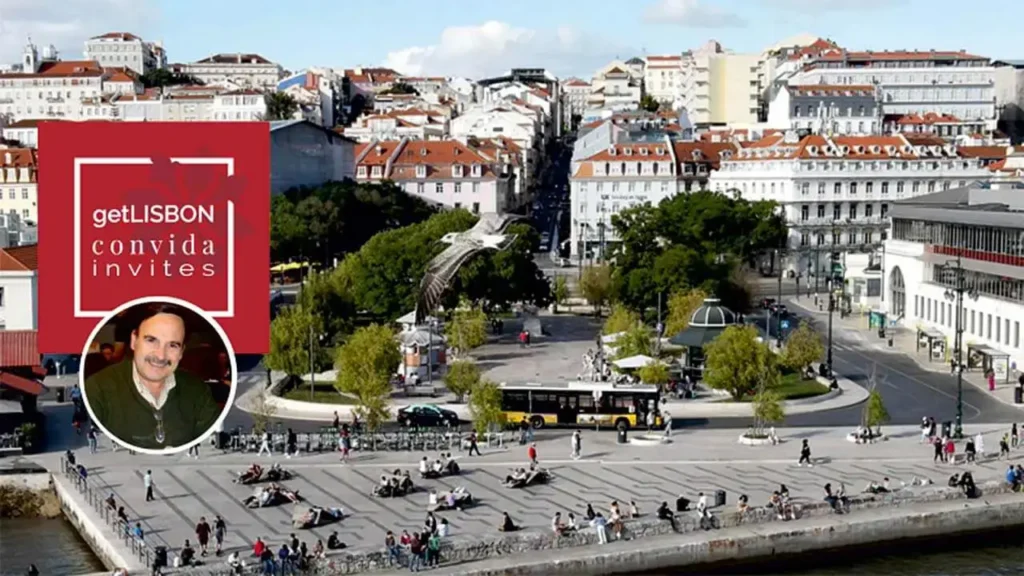This week in getLISBON invites series, we’re honoured to have the collaboration of Isabel Almasqué and António José de Barros Veloso. This couple of doctors, passionate about tiles, have, over time, contributed in a significant way to the study and dissemination of this very particular and expressive art form. They’re the authors of several reference books on this subject and in this interesting article about the Art Nouveau Tiles in Lisbon, they’re going to tell us about: how this artistic movement emerged; the main tile production units; their artists and even a reminder for some unique tilework of our city that deserve a closer look.
The artistic movement known as Art Nouveau emerged in Europe at the end of the 19th century and despite its short duration (1885-1910), it had a decisive influence on all artistic production of a time marked by profound economic and social changes related to the Industrial Revolution. Based on the rejection of previous conservative and academic styles and heavily influenced by the ideas of the Arts and Crafts movement, this style was the meeting point of multiple aesthetic influences. It sought to reconcile mechanised production with aesthetic quality and was, in a way, a precursor of what we now call “design”.
The Art Nouveau Movement in Portugal

In Portugal, at the end of the 19th century, the cultural circles were still not very receptive to the social transformations and aesthetic trends that had given rise to this movement and the industrialisation process was still at its beginning. Therefore, with few exceptions, Art Nouveau had a very discreet influence both in architecture and in the decorative arts and it was perhaps in the field of tilework that its development expanded the most.
Its main motives of inspiration were the elements of Nature, seeking to take advantage of everything that could suggest movement, lightness and freedom, rejecting the suggestion of volume and using sinuous curves and whiplash lines as its main characteristics.
The Case of Lisbon

In Lisbon, Art Nouveau tiles decorate hundreds of buildings, either by covering the façades with patterned tiles whose decorative elements obey this aesthetic, or through bands next to the cornices, friezes surrounding the openings or longer panels applied on pediments.
Lilies, pansies, poppies, water lilies, sunflowers and other plant elements often appear, represented in a stylised way and arranged along sinusoidal lines, suggesting movement; Butterflies, dragonflies, peacocks, swans, ducks or swallows, symbols of freedom and lightness in the world of birds and insects, also appear with some frequency. Rarer are the representations of the female figure, almost always wrapped in ethereal and flowing clothes, or decorated with long wavy hair that blends in with organic and vegetal elements.
Tiles Production Units
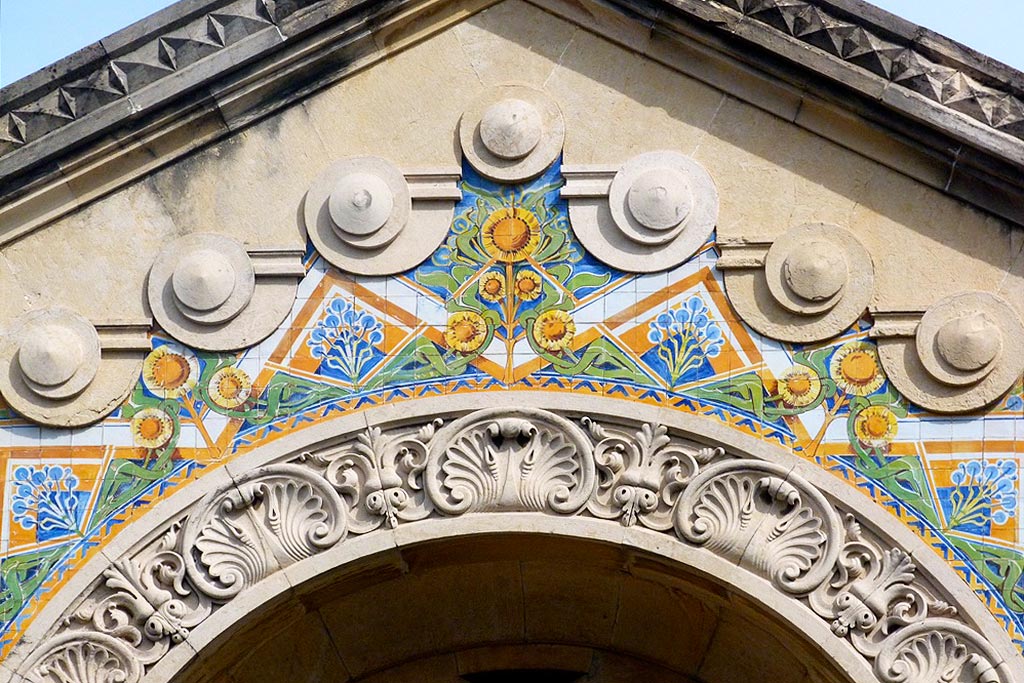
The Factory of Sacavém was the major producer of this type of tiles not only for Lisbon but for the rest of the country. On the one hand, the fact that it had already mechanised means of production and decoration allowed for large-scale production and, on the other hand, the influence of its English owners who, along with the new aesthetic trends that dominated Europe, always maintained close commercial contacts with other English factories that allowed the importation of raw materials, machinery, catalogues and even of some specialised workers and the adaptation of their production to the Portuguese taste, never losing its British characteristic.
The Factory of Desterro also produced many of this type of tiles, using the same production and decoration techniques as Factory of Sacavém, although on a smaller scale. Others, such as Factory of Constância and Lusitânia Ceramic, played a more modest role. However, in Lisbon we can find Art Nouveau tiles produced by factories in other regions of the country, namely by Factory of Faience from Caldas da Rainha and the Factory of Devezas. There were several techniques used, with emphasis on manual painting, mechanical printing, airbrushing and transfer printing.
Many of these tile ornaments were manufactured in series, using semi-industrial production techniques and by anonymous craftsmen, with no reference to the date they were painted or the name of their author. However, the factory where they were produced can often be deduced from manufacturing and decoration techniques. Some panels, having been made on commission for certain façades and painted by better-known artists, are dated and signed, or at least mention the name of the factory. The dated inscriptions that we found in Lisbon are between 1903 and 1918.
The Authors of Art Nouveau Tiles
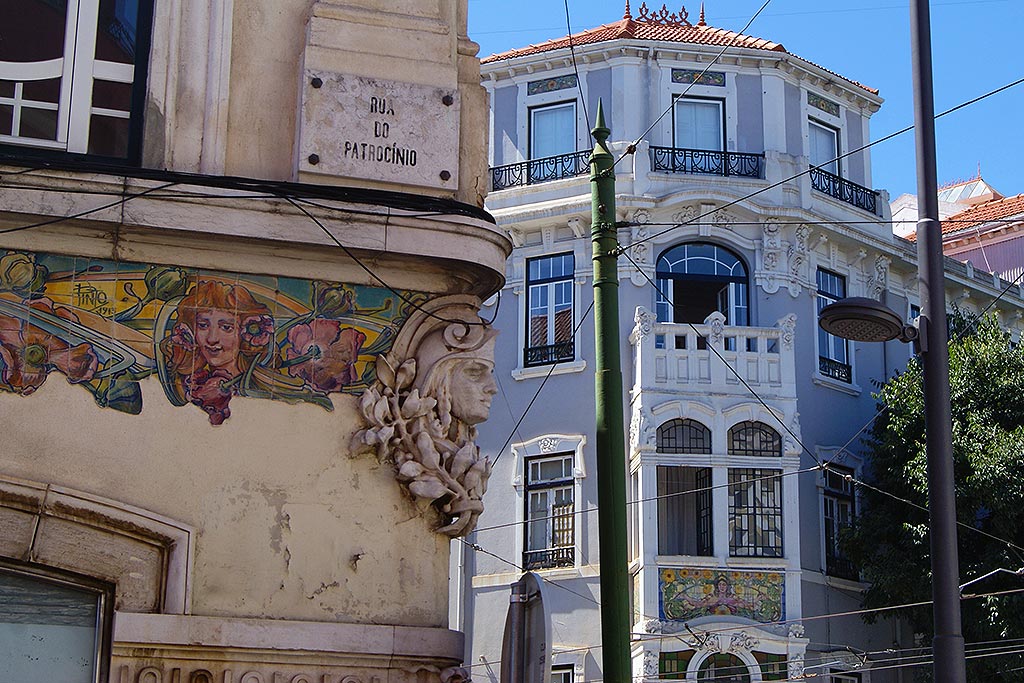
In addition to Raul Lino, Rafael Bordalo Pinheiro and Costa Motta Sobrinho, authors of some of the most notable examples of Art Nouveau tiles, other painters were also linked to this type of tilework, namely Carlos Afonso Soares and José Lacerda who worked at the Factory of Sacavém, José António Jorge Pinto who worked at Constância Ceramic and Factory of Campolide, Viriato Silva who also collaborated with Constância Ceramic, António Luís de Jesus, founder of Factory of Campo de Ourique, and others such as Alfredo Pinto, Luís Cardoso, Alberto Nunes and Francisco Gonçalves Freitas, authors of several panels that today can still be seen in some buildings in Lisbon.
Main Locations of Art Nouveau Tiles in Lisbon
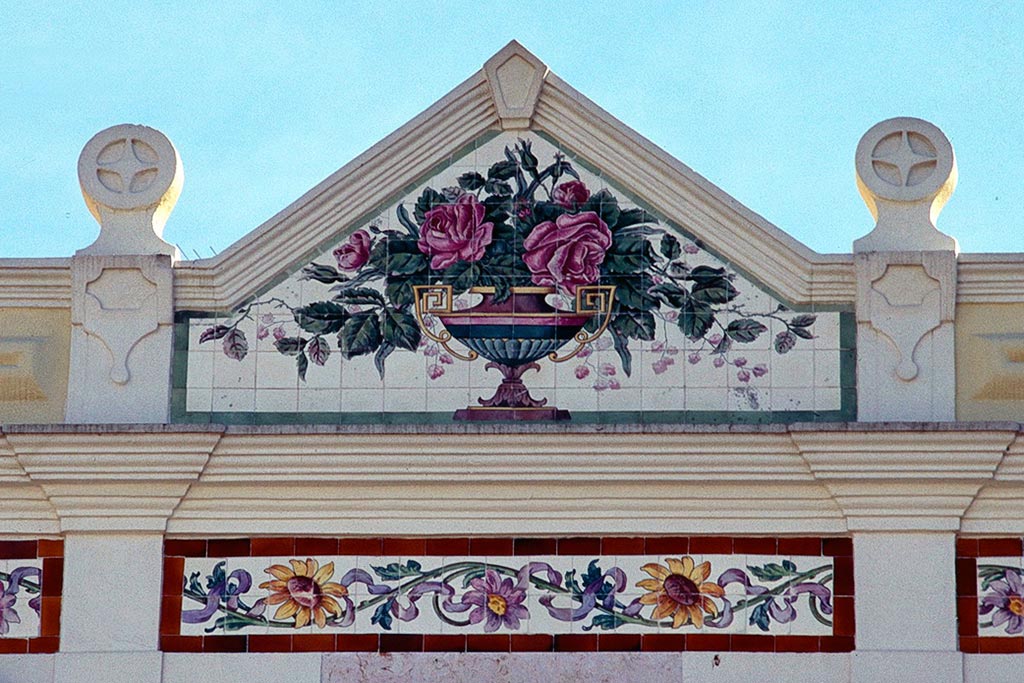
Although very dispersed, the Art Nouveau tiles in Lisbon are concentrated in some neighbourhoods, namely Avenidas Novas or Campo de Ourique.
Some examples, for their originality or for having been made on commission for certain façades, deserve special attention. Here are the addresses for those who are curious:
- Av. Praia da Vitória, 43;
- Av. Almirante Reis, 2;
- Av. Almirante Reis,74;
- R. Feio Terenas, 9;
- Av. 5 de Outubro, 6-8 (Casa-Museu Dr. Anastácio Gonçalves);
- R. Álvaro de Castro, 51;
- R. das Janelas Verdes, 70-78;
- R. Saraiva de Carvalho 242;
- R. dos Sapateiros, 225 (Animatógrafo do Rossio).
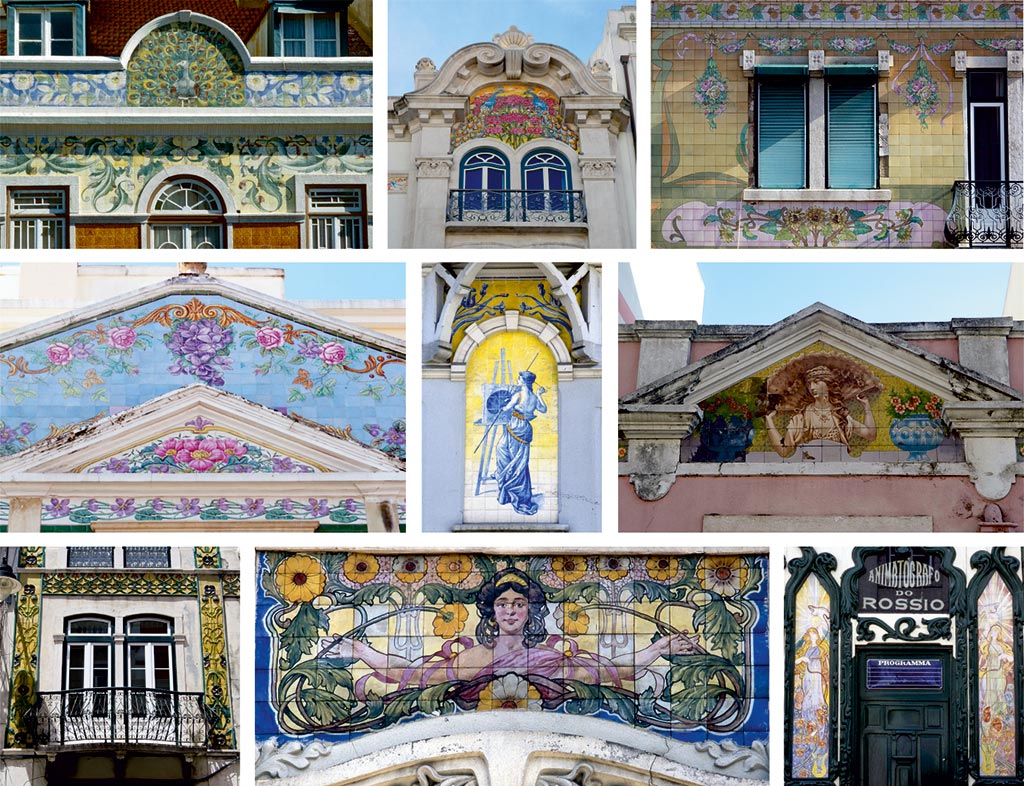
Despite thefts and frequent demolitions, many of the Art Nouveau tiles in Lisbon still persist in a few hundred buildings and can be admired by all of us. Just keep your eyes peeled.
| Never miss another article | Subscribe here |
getLISBON suggests you also read the article The Art and Design of the WC Kiosks of Lisbon, where we talk about the four WC kiosks, as well as about the Art Nouveau tile panels on the façades of each of them.

António José de Barros Veloso, internist. “Honoris Causa Doctor” by NOVA-Medical School. Decorated with the Medal of Merit of the Order of Physicians and with the Gold Medal for Distinguished Services from the Ministry of Health. In 2017, he was awarded the National Prize for Internal Medicine.
Isabel Almasqué, ophthalmologist. Co-founder and regular contributor to the website DE OUTRA MANEIRA.
They carried out the inventory of façade tiles in Lisbon (commissioned by the City Council of Lisbon in 1988-89) and published several books in the field of tiles, for which they received several municipal awards:
- Azulejos de fachada em Lisboa – Edição da Câmara Municipal de Lisboa, 1988
- Azulejaria de Exterior em Portugal – Edições Inapa, Lisboa,1991.
- Hospitais Civis de Lisboa – História e Azulejos – Edições Inapa, Lisboa, 1996.
- O Azulejo Português e a Arte Nova – Edições Inapa, Lisboa, 2000.
Curators of the exhibition “A Arte Nova nos Azulejos em Portugal” (The Art Nouveau in Tiles in Portugal). Aveiro, 2011

